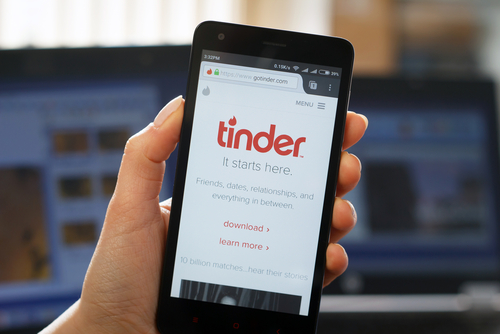Though it’s often the butt of many jokes around the online dating scene, Tinder has proven its efficacy at matching folks up on more than a few occasions. Now, though, it’s working to bring folks together in a more inclusive way. In their latest update, they’ve added options to allow users to self-identify however they wish with regards to gender. Options like Trans man and Trans woman have been added to a “More” subcategory under the “I Am” option within everyone’s profile. It’s (unfortunately) not a free-text field that allows just any entry, though the selection options within it are fairly numerous.
Previously, only the options “Man” and “Woman” were allowed, but now, users can search through a longer list of gender identification options including Genderqueer and Non-Binary. The addition of these options is, in part, a response to the fact that trans users of the dating platform were often reported to Tinder as spammers or “fake accounts.” While there isn’t hard data on exactly why people felt the need to report trans users as “fake,” it’s not too much of a stretch to think that much of that prejudice comes from the belief that trans people are not the gender they specify, that they are (you guessed it) “fake” somehow, and are trying to trick users by selecting the “incorrect” gender.
To address such erroneous reports, Tinder has also said that in addition to this feature, they’re working on enhancing the training of their support staff. In their blog post detailing the update, they write:
… we are learning to be a better ally to transgender and gender non-conforming communities by allocating additional resources to our support team, which includes educating our staff about the challenges facing these communities.
While they don’t detail exactly what that education or training might look like, it may be safe to say that it’ll be fairly thorough. This is given the fact that they, very much to their credit, turned to advocates and activists who identify along various points within the gender spectrum to get their input on how this feature should come about. GLAAD’s Transgender Media Program got involved with the development, trans filmmaker and activist Andrea James was also involved, and apparently the update was promoted by the folks at Transparent.
Whether this will help normalize feelings around trans people in general remains, of course, yet to be seen. As well, the safety of those in question remains a general concern. After all, those who identify as trans, genderqueer, or non-binary often face higher risk of assault after disclosing that they are trans to their dating partner. In 2016 alone, 24 trans people have been murdered (with a disproportionate number of those people being trans women of color), often at the hands of people who feel they were “tricked” into dating a trans person. A handful of people in recent history have gotten away with the murder of trans people thanks to something called the “trans panic defense,” wherein somebody can be found to be not guilty based on the fact that they were “surprised” enough by someone’s trans status that they, you know, killed them. While that defense has been outlawed in many states and has generally been discouraged by the American Bar Association, it shows that people often feel justified in brutalizing and assaulting trans people.
Obviously, Tinder’s update and their enhanced training won’t fix these risks and these problems—which are, after all, more deeply rooted in systemic issues regarding gender—but their efforts to normalize and raise exposure to trans people feels like a genuine effort to at least address these things. The addition of the option to place your gender identification right in your profile may help combat such safety issues around dating by allowing people to state up front what their gender is. This absolutely won’t completely remove the risks associated with dating while trans, but again, it may ease a tiny handful of those fears.
In these trying times, it becomes even more important to not only highlight those who are often marginalized in the eyes of others, but to also make sure they feel included, welcomed, and thought of when it comes to many of the privileges that others may enjoy. Dating while trans remains, as ever, something of a risk, but it is heartening to see Tinder follow the same path laid out by OkCupid a while ago, rising to the occasion with this update.
(via The Hollywood Reporter, featured image via Shutterstock/Happy Zoe)
Want more stories like this? Become a subscriber and support the site!
—The Mary Sue has a strict comment policy that forbids, but is not limited to, personal insults toward anyone, hate speech, and trolling.—
Follow The Mary Sue on Twitter, Facebook, Tumblr, Pinterest, & Google+.









Published: Nov 15, 2016 03:23 pm